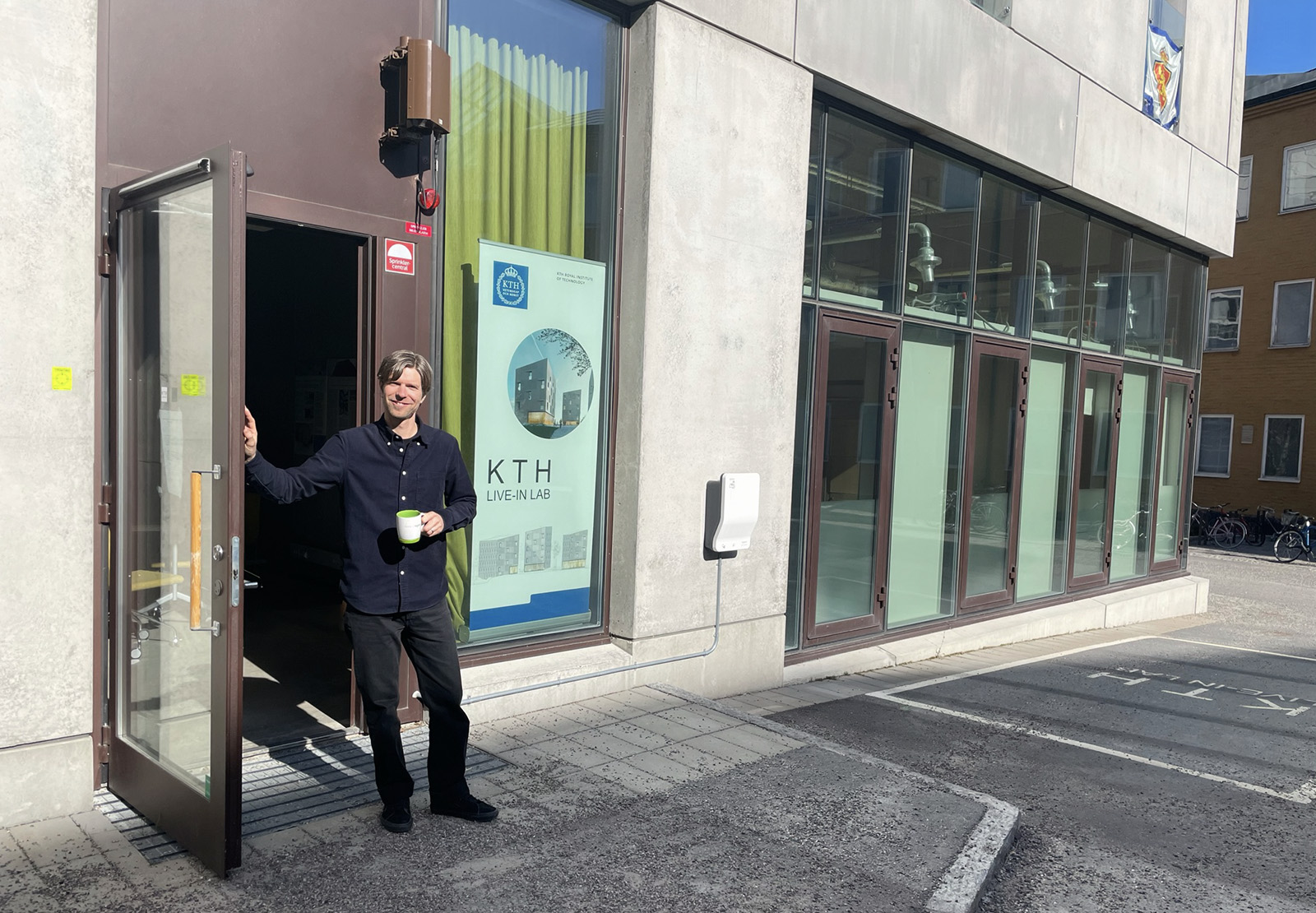Smart and Sustainable Buildings: new book from Jonas Anund Vogel

In his new book ”Smarta och hållbara byggnader” (Smart and Sustainable Buildings), Jonas Anund Vogel, director of KTH Live-In Lab and Dig-IT Lab, gathers his experience from research and networking on sustainability challenges in the built environment. The book describes technology, actors and perspectives influencing development, and provides research-based yet concrete recommendations for anyone interested in today’s and tomorrow’s construction sector.
Hello Jonas, why are you so interested in buildings?
“I think it started with an interest in craftsmanship. I tried boat carpentry, but it wasn’t for me. I am a bit too impatient, don’t want to do the same thing twice, and then it occurred to me that you can combine an interest in craftsmanship with more theoretical considerations. Road and Water Civil Engineer sounded hands-on and grounded in craftsmanship, so I went for it! Since then, I have worked with buildings, from calculation and project management to innovation and research.”
Who is the book aimed at?
“My hope is that various decision-makers, from politicians and officials to project developers and entrepreneurs, can benefit from the book. I want to convey that one can take a different path than the deep ruts that the construction and real estate sectors have been digging for decades, and provide readers with some thoughts that can make them glance over the edge.”
“I also hope that more people can enjoy reading this little book. It is written so that anyone who likes buildings can grasp most of it. There are parts that are a bit more demanding, but I am confident that readers can switch to swipe mode when needed.”
What are the biggest challenges in developing more sustainable buildings?
“We have a construction sector that is completely fragmented. Everyone has incentives to focus on their own tasks. The one responsible for building interior walls with wood has an incentive to keep their timber dry, but the one tiling the bathroom doesn't care if there's a pile of wood out in the rain.”
“The lack of collaboration ultimately leads to higher construction costs, poorer quality, and higher costs for end customers. It also cements the feeling of not trusting each other, creating a negative atmosphere. The challenge is simply to get everyone to want to collaborate and get all actors to want to do their best, even over time. We need to identify incentives for this. Then, most things will follow suit!”
Are there any measures that the industry can take relatively quickly?
“I believe that a relatively simple thing is to extend the actors' commitment during the construction phase, so instead of ending at the approved final inspection, it would actually continue until the end of the warranty period. It would mean viewing buildings as industrial properties designed to deliver services, rather than as mere boxes intended to keep out rain and harsh weather.”
“I also think that academia and industry have a lot to gain from collaborating on competence supply related to smart buildings. We need to quickly increase the competence of a large number of building technicians and create a new image of buildings and properties already at the high school level. An interesting figure is that in 2023, 69 people graduated from the HVAC and real estate program in Sweden. If we genuinely want to reduce resource consumption from buildings, that number needs to increase. But cooperation is required there as well.”
Text: Alexandra von Kern
Related:
Article on hallbartbyggande.com (Swe): KTH-forskarens bok visar vägen för framtidens hållbara byggnader
